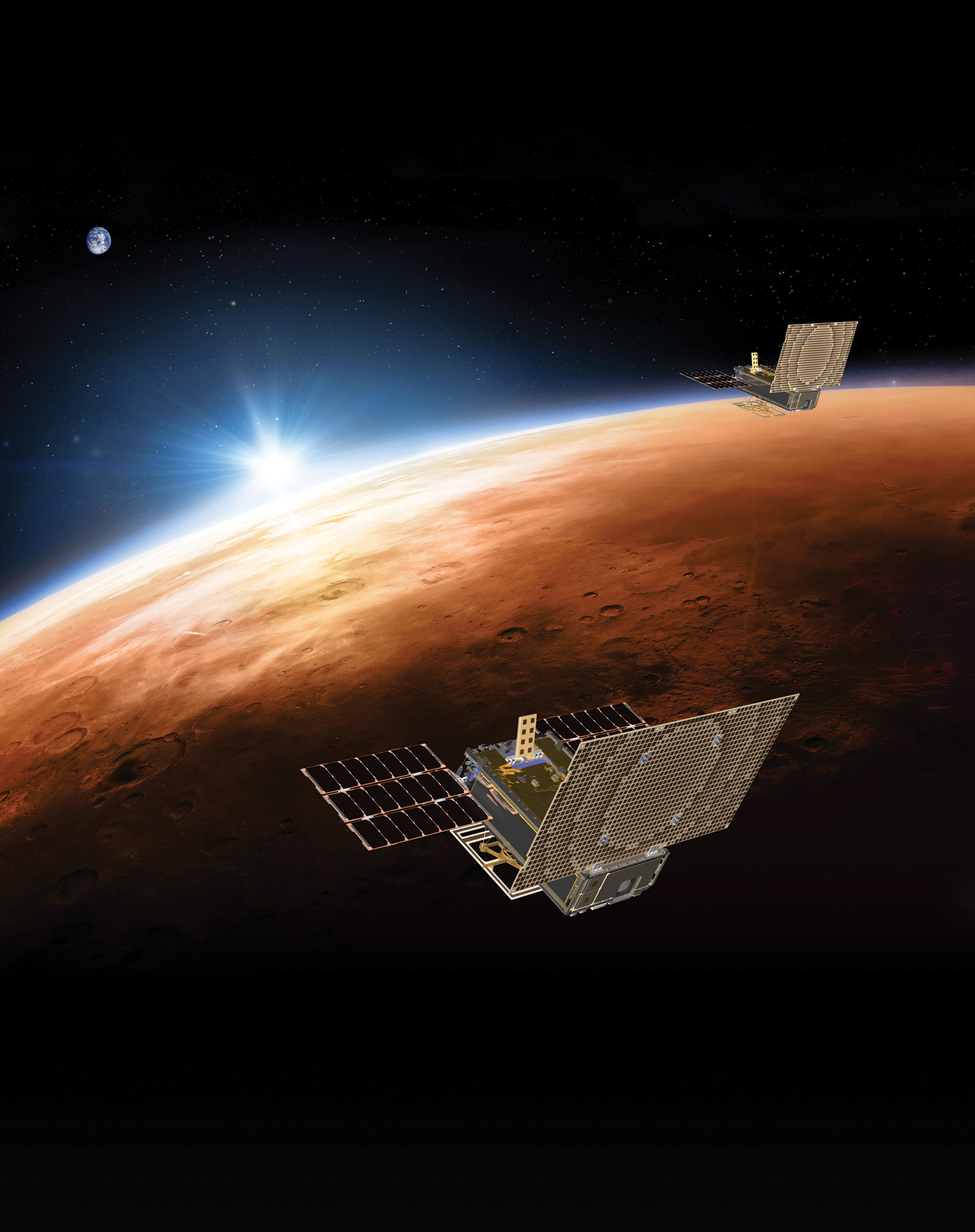Stay Up to Date
Submit your email address to receive the latest industry and Aerospace America news.
The Astrodynamics Technical Committee advances the science of trajectory determination, prediction and adjustment, and also spacecraft navigation and attitude determination.
This year was marked by the launch of a number of satellites as well as major milestones for other ongoing missions. In February, SpaceX tested its Falcon Heavy rocket, which is designed to deliver up to 63,800 kilograms to low Earth orbit, the most capacity of a launch vehicle since the Saturn 5 rockets of the Apollo era. The test launch culminated in the autonomous, simultaneous landing of the vehicle’s two first-stage boosters in Florida as planned. The center core rocket was not recovered but SpaceX is expected to try again on future launches.
In May, NASA’s InSight lander launched toward Mars with an expected arrival date in November. Joining the lander on its trajectory to Mars were the first planetary nanosatellites, or cubesats. The Mars Cube One cubesats, each with a mass of 13.5 kg, were scheduled to perform a Nov. 26 flyby of Mars to coincide with the descent and landing of InSight, providing communication relays to Earth. The small satellites separated from InSight shortly after reaching their escape trajectory near Earth, meaning the cubesats navigated independently to Mars and will need to be precisely at the right place at the right time for the relay operations.
After a four-year journey, in June the Hyabusa2 spacecraft arrived in orbit around asteroid Ryugu, deploying a canister with two rovers to the surface in September and a lander in October. The weak gravity field of the asteroid makes normal wheeled motion difficult, so the rovers “hopped” across the surface. The Japan Aerospace Exploration Agency, or JAXA, spacecraft and rovers will spend the next year and a half studying the asteroid, after which the spacecraft will return to Earth with a cache of samples that will add new insights to the origin and evolution of our solar system. On a similar note, NASA’s OSIRIS-REx mission also began its approach phase in August to the 500-meter-diameter asteroid Bennu. By December, OSIRIS-REx was to have executed a series of complex maneuvers to come within 7 kilometers of the asteroid’s surface. In addition to gathering numerous remote sensing observations of the asteroid, the spacecraft will eventually gather a sample from the surface using a robotic arm and return the sample to Earth.
Following its August launch, NASA’s Parker Solar Probe on Nov. 5 skimmed by the sun at a distance of 24 million kilometers, far closer than any other spacecraft has come. At this perihelion, Parker also set a new record for spacecraft speed of 343,100 kph. In the coming years, the spacecraft will ultimately reach a closest approach distance of just 6.16 million km (compared with Earth’s mean distance to the sun of 150 million km and Mercury’s mean distance of 58 million km) at a speed of 692,000 kph and survive temperatures up to 1,377 Celsius. The mission design involves a highly elliptic orbit and seven Venus flybys.
Closer to home, earlier this year, NASA launched two spacecraft that will continue measurements of Earth’s time-varying gravity and topography. The Gravity Recovery and Climate Experiment Follow-On, or GRACE FO, mission, launched in May, consists of twin satellites in a near-polar orbit. The redistribution of mass at Earth’s surface due to changes in the solid-earth (e.g., earthquakes) and hydrosphere (e.g., aquifers, glaciers, oceans) cause small variations in the gravity field, which in turn cause GRACE FO satellites’ orbits to also change slightly. These orbit variations are detected by the satellites’ intersatellite ranging systems, which allow the monthly gravity fields to be inferred. The ICESat-2 mission, launched in September, will combine precise orbit determination (centimeter level) and precise attitude determination (arcsecond level, or 1/3,600 of a degree) to geolocate the energy returns of the mission’s laser pulses and precisely map the topography of the land and ice sheets over time. GRACE FO and ICESat-2 will provide valuable insight into many of Earth’s dynamic processes, both natural and man-made.
NASA illustration: The twin Mars Cube One spacecraft fly over Mars in an artist’s rendering.
Stay Up to Date
Submit your email address to receive the latest industry and Aerospace America news.




